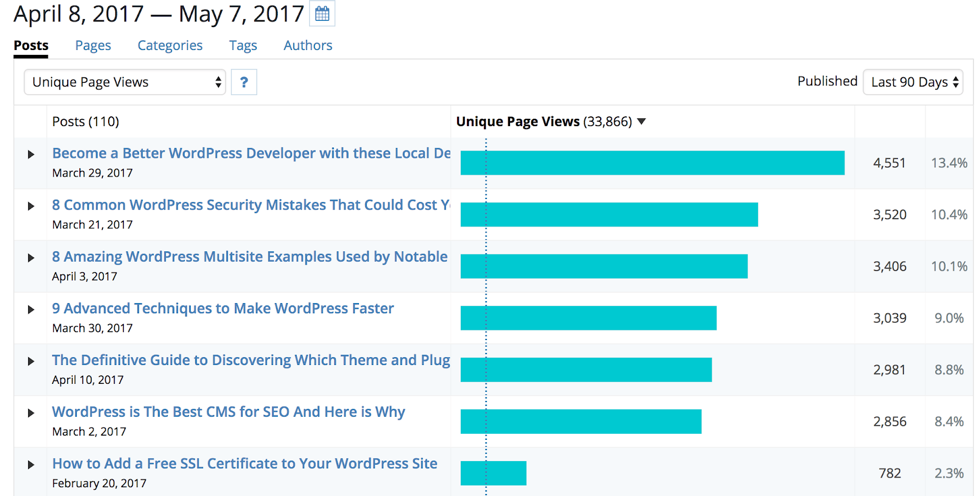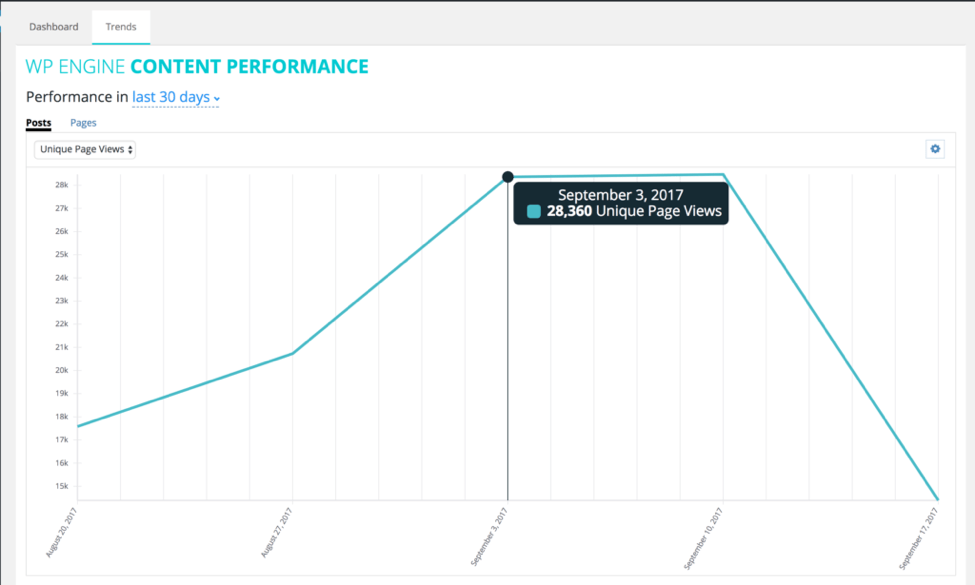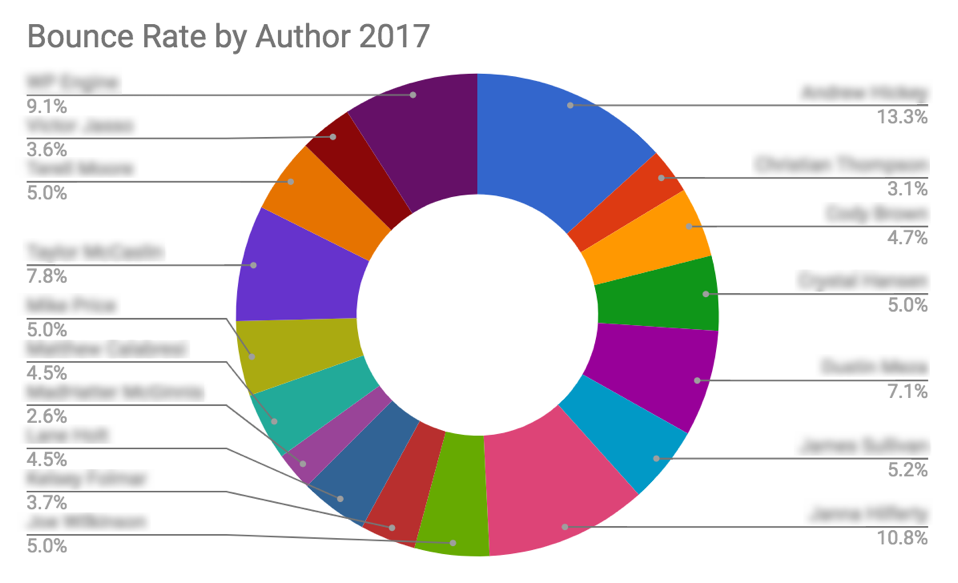WP Engine products are designed with the customer in mind; they’re intended to help our customers’ businesses thrive by helping them win online. Content Performance, a WP Engine tool that integrates raw data from Google Analytics and optimizes it for WordPress, was designed to provide content publishers with actionable insights via analytics. With Content Performance, WP Engine customers can take advantage of WordPress-optimized Google Analytics data integrated directly into the WordPress admin dashboard. With a few clicks, content creators can see which content or categories are getting the highest page views, how much time site visitors are spending on a particular page, what content users are bouncing from and more.
We’re especially aware of the benefits of our products because we use them ourselves. To better understand a real-life use case for Content Performance, we asked people who publish content regularly. In addition to Content Specialists at WP Engine, we asked Emily Schiola and Mercedes Cardona, the editors of Torque and Velocitize, how Content Performance helps inform publishing on a daily basis.

Alyssa Cuda, Content Specialist (Marketing), WP Engine
I post frequently on the WP Engine blog, but the type of content varies immensely. One day we will be posting customer stories, the next we’ll do an employee spotlight and the next we’ll provide a piece about what is going on in the WordPress community. Offering variety is important but it’s never a good idea to post content aimlessly. Content Performance helps give me direction.
Not only do I know what content is performing well and what content isn’t, I know what content proves to be timely versus evergreen. I know what day of the week people are most likely to engage with the blog and what type of content they are looking for. Additionally, when it comes to providing metrics and data for quarterly reports on performance, Content Performance provides an easy way for me to show how much traffic my content is getting, the average session time of that visitor and more. For me, the simplicity and usability of Content Performance is a necessary part of my day-to-day responsibilities.

Emily Schiola, Editor, Torque Magazine
Torque is a publication powered by guest contributors. Torque has three people who submit articles regularly, but for the most part it’s a different writer every day. While this model allows for varying topics and viewpoints to be expressed on the site, it can be hard to approve pitches. Content Performance allows me to see which topics are performing well on a week-to-week basis, and which aren’t getting views. That gives me the power to suggest topics to interested writers, or choose the more powerful ones from a list of pitches.
I’m also able to see which writers are performing to help inform which writers I ask to make regular contributions. This has been a tremendous help and actually allowed me to parse down the number of regular contributors to the three that are incredibly reliable and bring in significant views.
Content Performance has also been instrumental in my monthly content planning. At the beginning of each month, I see which topics are doing well and which have fallen off. That informs how I approve pitches, or even which writers I reach out to. Checking at the beginning and middle of each month keeps me really in tune with what our audience wants.
Janna Hilferty, Content Specialist (Customer Experience Operations), WP Engine
Content Performance is unique in that it allows you to see Google Analytics performance metrics, cross sectioned with metadata from WordPress. My work is almost exclusively Support Documentation on the wpengine.com website. Because Support Documentation is its own custom post type, Content Performance allows me to see the Support Documentation data separately from content on our blog, static pages or other resources. I can use Content Performance to see which categories are the most engaging for our customers, and which have high bounce rates. Last, Content Performance was instrumental in helping me perform my end of year content analysis by gauging the impact of my work, finding which authors had the most traffic and lowest bounce rates and finding opportunities for updates and new content.

Mercedes Cardona, Editor, Velocitize
Velocitize works in a very crowded field; we strive to compete with popular publishers like Digiday and CMO.com. However, our resources are more limited, so we have to prioritize strictly. The ability to compare the popular content by post date helps us see what content has a long tail, so we can continue to surface it on social media, and what real-time coverage we can limit to save our resources.
Learn More
Content Performance is now available as an add-on for our Startup, Growth, and Scale plans. For more information on specific plans, check out our plans page. Already a WP Engine customer and interested in add-ons? Learn about how to enable add-ons to your existing plan.

Leave a Reply